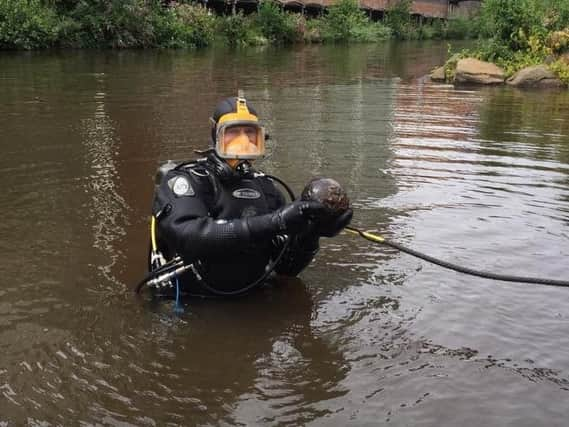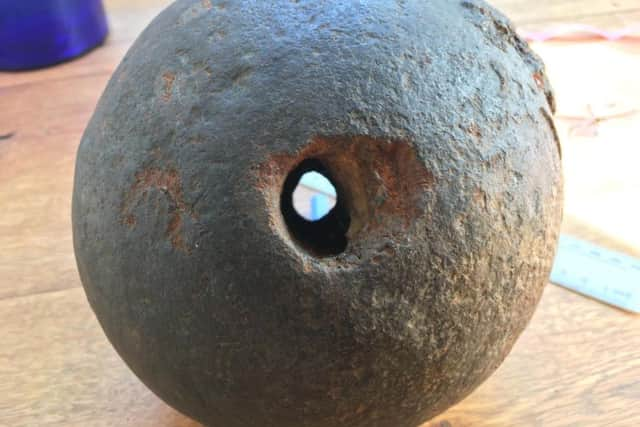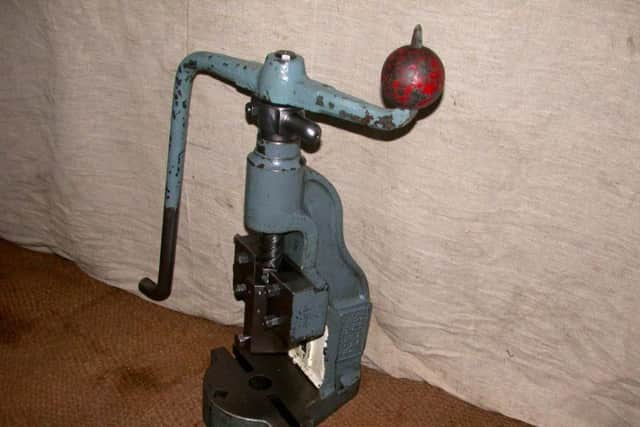Suspected cannonball hauled from River Don in Sheffield 'is an industrial weight'


All the pieces of the jigsaw puzzle fit together, it would seem - the heavily-corroded find is just the right size and diameter to be a piece of heavy Civil War ammunition, and it was discovered by police divers searching the river close to the site of the castle ruins.
But the reality may be somewhat different. Since the story appeared on The Star's front page on Tuesday, readers have been in touch to say the ball looks remarkably similar to the weights on fly presses that were commonly used in Sheffield's cutlery industry to stamp knives and forks.


Advertisement
Hide AdAdvertisement
Hide AdOne correspondent, Peter Sellars, said the telltale clue was a hole that is punched through the object, which weighs 32lbs with a circumference of 20 inches.
"It is a great possible find, but I fear the hole may indicate a different source," he said.
"In Sheffield steel and cutlery works there were many hand-operated fly presses. Simply described, it was an overhead rotary arm; if you imagine a helicopter rotor, on one end was a handle and on the other a ball, sat on an upright pin - hence the hole.
"When the operator pushed the handle round, a screw down the centre of the machine was driven down, and the inertia generated by the weight of the cast ball on the end of the arm would punch a tool down through the material or form a shape in a press tool."


Advertisement
Hide AdAdvertisement
Hide AdThere remains the possibility, Peter said, that a hole was drilled in a cannonball. "But in the recent past there were many cast balls around."
A team of nine divers made the discovery last July while searching the Don for evidence of a crime on the Wicker. The item was stuck in mud, and historians are trying to pinpoint its original purpose with the help of experts at the Royal Armouries in Leeds. Archaeologists are preparing to begin work on an excavation of the medieval castle remains, a dig that is expected to last for four months.
The castle, which gave its name to the former Castle Market, was demolished more than 300 years ago, and few remains have survived above ground. Police took the suspected cannonball to Weston Park Museum, who recommended the services of John Moreland, of Sheffield University. He sent photographs to one of the country's leading authorities on ballistics, based at Leeds.
"He got back to me and said yes, it's a kind of cannonball designed to carry explosive charges," John said. He said it was 'unlikely' to be a 'metal crushing ball used in the steel industry'.
"If it's not a cannonball then what is it?"
Advertisement
Hide AdAdvertisement
Hide AdBut another reader, Ken Tomlinson, said: "It's very interesting that police have found a Civil War cannonball in the River Don - some people have got vivid imaginations. It's not a cannonball for sure because it wouldn't propel with a hole in it, and I don't think the size of gun was around in those times.
"What's been found is a weight off an old manual press. The weights varied as to what was being manufactured. They are still in use to this day; I think a lot more will be found."
And Vin Malone said Tuesday's story provided some amusement. "It gave me a smile. A cannonball? No, it's not. It's a weight from a bench fly press used throughout the cutlery industry, and in other industries too. I can imagine Oliver Cromwell using a bench fly press, pressing out mementos of the raising of Sheffield Council."
Dave Warsop said there were further interesting details to note. "In my opinion it is a fulcrum weight from the operating arm of a fly press, there are normally two of these which give extra impetus to the up-and down motion of the screw. It appears the hole is tapered, which fits the tapered mount on the press. They are normally made of cast iron and a few test drillings would confirm this."
Advertisement
Hide AdAdvertisement
Hide AdDuring the Civil War, which ended in 1644, 1,200 Parliamentary troops laid siege to Sheffield Castle. Soldiers bombarded the thick stone walls with fire - a large gun, Queen Elizabeth's Pocket Pistol, eventually breached the walls and the defenders gave in.